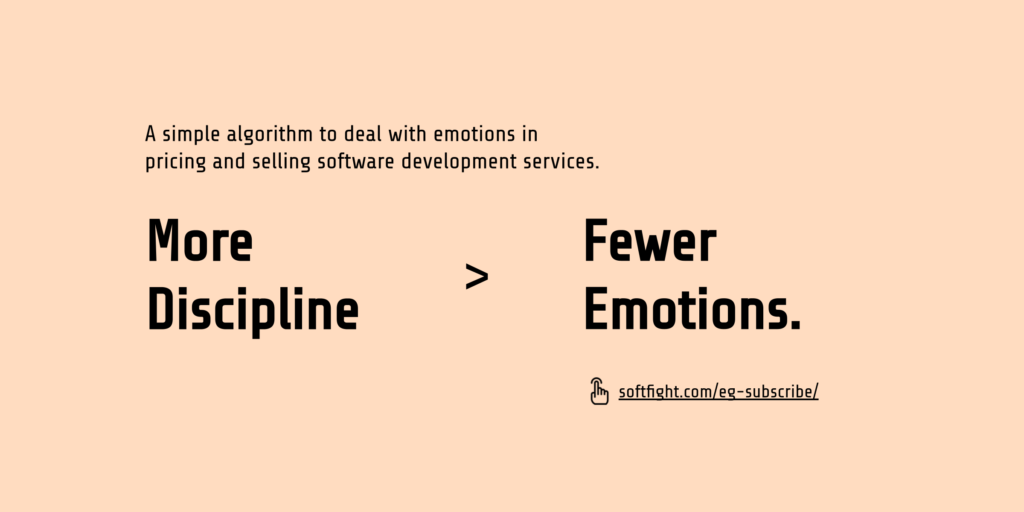I heard that recently in a podcast interview with psychologist David Matsumoto.
I thought it would be interesting to explore what this means for pricing by looking at how the 6 types of basic emotions can derail us and lead to sub-optimal pricing or sales outcomes.
These are all examples from my own experience.
Fear
Anyone who is pricing out of their heads, without a formal, documented and disciplined process to calculate prices will be one way or another influenced by their fears.
When talking with a new potential customer, the fear of not getting the project makes us charge less than we could.
The fear of losing customers stops us from raising our rates even if we know that costs have gone up significantly.
The fear of what clients will think of us stops us from setting different rates for different customers, even though we know for sure that they get different value from us and some should pay higher prices for the same quality as others.
Surprise
Some people don’t like surprises. Especially the type where they have to pay more.
This leads to situations where we enter a downward spiral
- “I don’t want to surprise my customers with negative news about prices”
- “So I will be very transparent about our pricing upfront.”
- “Oh, but this customer needs higher levels of quality and service than the ones we took into account when we set our prices. If I take this project, it will not be profitable”.
Anger
Most price increases are not prepared and communicated properly, which leads to customers being downright angry about them.
Next time the vendor will be much less likely to even think about raising their rates when they should.
Especially if there are sales people involved in the mix, they will do everything in their power to prevent their customers from getting angry. Which a lot of times means not raising rates when they should.

Disgust
Some people are visibly disgusted if the prices they are seeing are significantly higher than what they were expecting.
Many years ago I was pitching a software project and when I presented our financial proposal the prospect’s reaction was just that: disgust. We did not get the project.
The lesson I learned from that was to always try and qualify the prospect’s budget and willingness to pay from the first discovery meeting, to avoid putting effort into making project proposals for people whose expectations are too far removed from reality.
Sadness
I know myself very well now. In the past, if I was in a sad mood and I was working on a financial proposal for a new project, I would always put a lower asking price than normal.
Once I realised this, I would wait for me to be in a better state of mind before setting prices for a project.
And now my prices are set by an algorithm that I created, so that my emotional state has no influence on the outcome.
Happiness
It has no statistical relevance, but my empirical experimentation has shown that when I presented a proposal for custom software projects to prospective clients who were in a happier mood, I would manage to sell at higher prices.
WHAT THIS MEANS FOR YOU
You don’t have emotions.
Emotions have you.

